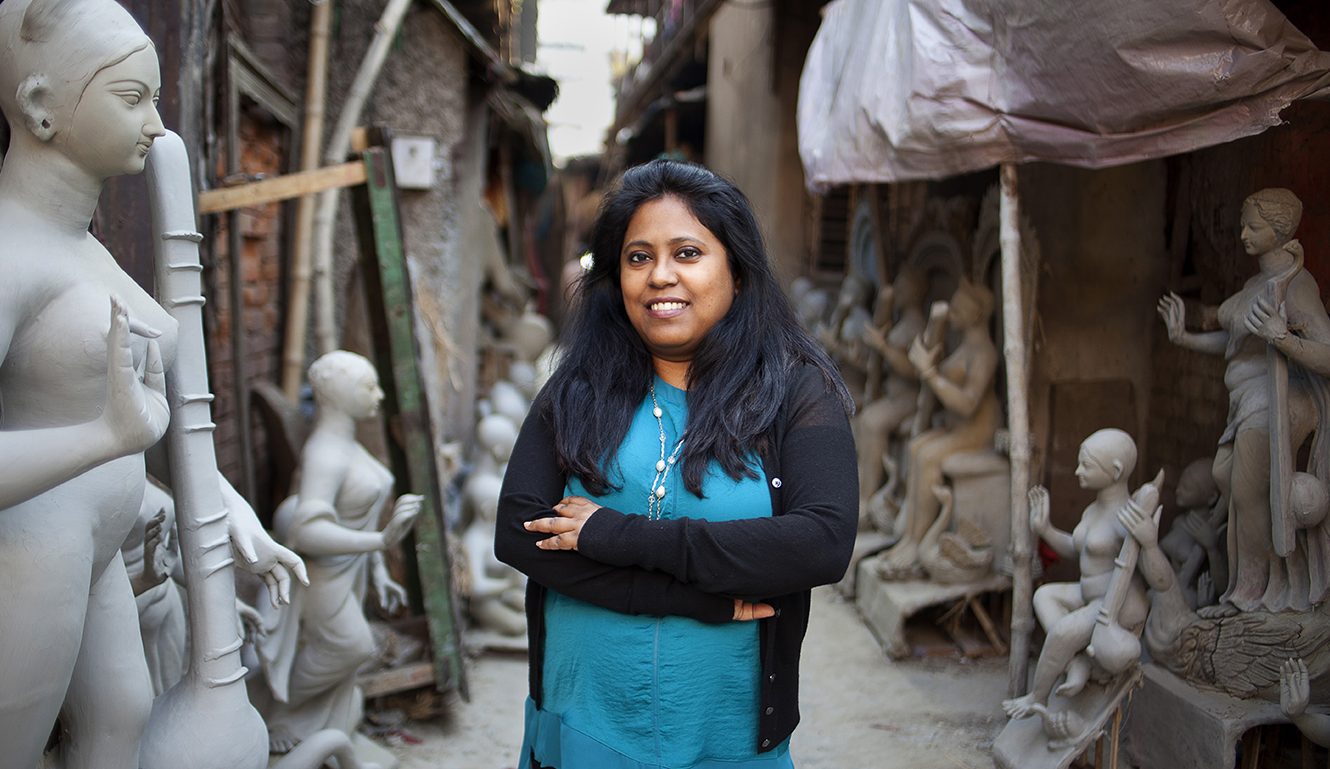You earned degrees in India and America in both sociology and communication, and your research blends the fields. Your motivation? The fit?
I have always been interested in understanding how society works—its macro structures and institutions and ways they shape messaging and identities.
You analyze political urgencies: media coverage of racial attacks on Indians, the banning of the hijab in French state schools, the Syrian refugee crisis.
My research intersects media, culture, politics, and economics. It investigates how media construct cultural groups and ethnicities in response to various internal and external demands of modern nation-states. Hence, I study the ongoing political strife/struggle for identities, the perpetuation of stereotypes by political interests, and the struggle for power and media representation.
You also examine the legacy of the caste system in your native India.
Caste discrimination, which is still rampant, is treated by the government as well as the general public as separate from racial oppression. The absence of racial category in political discourse has led to the foundational common sense understanding that Indians are raceless. Since caste discrimination is banned by the Indian Constitution, the government takes a defensive stance, suggesting that underprivileged caste groups are protected under law and, therefore, perpetrators of caste discrimination are punishable. But the reality remains: Caste functions within the social and economic structure in everyday life.
When you’re in the U.S., what do you long for from India?
The warmth of family.
When you return to India each summer, what do you miss about the U.S.?
The orderliness of public life.
Hollywood movies or Bollywood movies? Both? Neither?
Neither. Pedro Almodóvar, Satyajit Ray, Majid Majidi, Wong Kar-wai, Quentin Tarantino, not in that particular order.
What do you do for fun?
Travel, dance, learn guitar, learn horseback riding, try different cuisine.
OHIO President Roderick J. McDavis left in February. His legacy, as you see it since your arrival to the University in 2008?
His pledge to work collaboratively with medical facilities in Southeast Ohio to strengthen local healthcare and his pledge to work more closely with public school systems.
What do you like best about the Southern Campus?
Coming from a bigger school, Washington State University, where I earned my doctorate, I found it refreshing here to be able to develop close relationships with students. Many are first-generation college goers. They look up to professors. There is opportunity for mentoring, which I find more fulfilling than teaching. Also, the culture in Southeast Ohio differs from what I am used to; hence, it provides an excellent opportunity for me to grow.
Another topic you pursue is women’s empowerment in rural India.
What is noticeable in women’s narratives (in a particular rural group in Northern India) is that they were not even aware they were denied the basic social right to their lives’ decisions. Familial and societal restrictions confined them to the boundaries of home and denied them the right to partake in societal processes. The very act of being a member of a women’s group provides the women opportunity to create an agentic space from where they are able to address entrenched sociocultural issues not just within the confines of their personal lives, but also at the macro societal level.
Closer to your adopted home, you explored the legacy of environmentalism in Appalachia vis-à-vis communication.
I studied environmental health risks of residents below the poverty line—marginalized people—and possible solutions as dialogically constructed by them. The dialogue with residents revealed areas of ambivalence and dialectical tensions. Although participants demonstrated deep concern for their health, they did not blame their socioeconomic reality of poverty for health issues. Instead, they categorically put environmental pollution, lack of government regulation and monitoring, and negligence of chemical plants at the helm of health hazards.
One course you teach is “Communication between Cultures.” Another is “Intercultural Communication.” Some premises of such bridge-type classes?
Increase understanding of cultural identity and the basic concepts, principles, and skills regarding communication between persons from different cultural, racial, and ethnic backgrounds. Explore the interconnected relationship between culture and communication and relate that to real-life experiences. Understand that culture and communication are both theoretically rooted in the idea of a socially constructed reality. Understand the relationship among culture, language, and communication. Understand the relationship between culture and communication by looking at communicative practices in various contexts—gender, class, race, disability, sexuality, sexual orientation, and so on.
You were one of five Ohio University Regional Higher Education faculty members named a Collaborative Online International Learning fellow for the 2015-16 academic year. Summarize your undertakings.
I proposed incorporating a global learning component in two courses: Communication between Cultures, with the intent of collaborating with folks in India and Cuba, and Women and Health, with the intent of collaborating with folks in India and Colombia.
The notion of “legacy”—applied however occurs to you—in India versus the U.S.?
India’s sheer diversity of faiths, ethnicities, linguistic groups, cuisines, morés, and beliefs have coexisted for centuries through synergy, assimilation, and accommodation. I find that in the U.S., too, but mostly on the coasts and in bigger cities. Acceptance is key to both societies and what makes them fascinating yet complex. In the U.S., social status plays a less significant role than in India, where, unfortunately, ascriptive status (social class or stratum primarily via hereditary) often plays a significant role.
ABOVE PHOTO: Purba Das studies identities and stereotypes as displayed by media. She is an associate professor of communication studies at Ohio University’s Southern Campus. She is pictured on January 22, 2017 among statues in Kolkata, also known as Calcutta, in the West Bengal state of her native India. Photo by Subrata Biswas/AP Images



